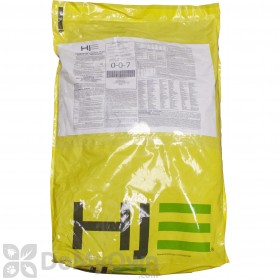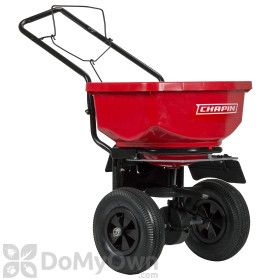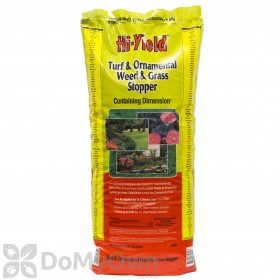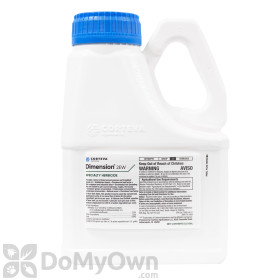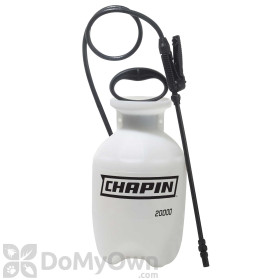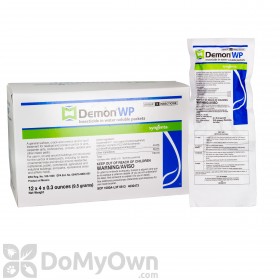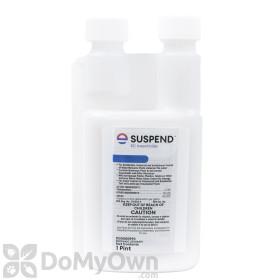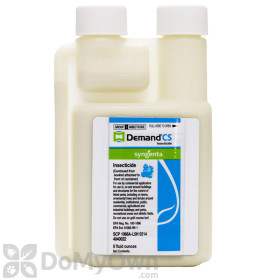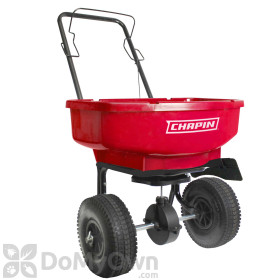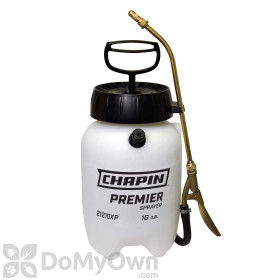
You don't have to travel far to see Bermuda grass (also known as Bermudagrass) - it's one of the most popular turf types in the United States! If you live in a warm climate, chances are you have Bermuda in your yard or have seen Bermuda grass on athletic fields and golf courses. Use this guide to confirm you do indeed have Bermuda grass, learn how to care for it, and how to prevent the most common weeds and diseases that affect this bright, beautiful turf.
What is Bermuda Grass?
Bermudagrass is a warm season grass that is heat and drought resistant, flourishing in full sunlight. The turf originated in Africa then traveled across the Atlantic Ocean and is believed to have made its way to the United States from Bermuda, hence its name. Since landing in America, it has become one of the most prevalent grass types in the southern United States.
Bermuda grass grows quickly, which makes its sod and seed less expensive than other turf types. However, quick growing also means more frequent mowing, one downside of Bermuda grass.
Blades of natural Bermuda grass are thick and flat. Bermuda grass stems spread rapidly thanks to rhizomes and stolons. Rhizomes are runners that grow below ground while stolons grow above ground. Both are stems that produce shoots of grass. Because the rhizomes and stolons can spread far, Bermudagrass can quickly invade flower beds and gardens.
The blades of hybrid types of Bermuda grass may be finer and thinner, but all Bermuda is recognizable by its color.
The grass is bright green or gray-green as it grows but will brown quickly once it goes dormant. Bermuda will go dormant once temperatures cool in the fall faster than other warm-season grasses and stay dormant longer. The grass should green up after significant rain in the spring once temperatures reach 60-65 degrees and higher.
Bermuda grass thrives in warm climates and full sunlight but does not do well in the shade. Homeowners may notice brown spots of grass beneath shady trees and decks while the rest of the lawn is fully green. If a lawn is mostly shaded, Bermuda grass may not be the best turf choice for that property.
How to Care for Bermuda Grass
Bermuda grass is relatively easy to care for, especially if you give the turf attention a few times per year. By mowing, aerating, watering, and fertilizing your grass as needed, you can have the most vibrant, beautiful lawn on the block!
Mowing

Bermudagrass grows quickly so it requires frequent mowing, especially during rainy seasons. Follow these tips to keep your Bermuda grass healthy and weed-free.
- Mow every 1-2 weeks as needed.
- Keep grass blades 1/2 inch to 2 inches long. Do not remove more than 1/3 of the grass blade to prevent stress.
- Your first mow should be in mid-March, after the final frost of winter, once soil temperatures reach 55 degrees or higher.
- Your first mow after the winter should be low to remove dead or damaged grass.
- Continue mowing throughout the spring, summer, and fall until the first frost of fall or until grass goes dormant.
Sodding
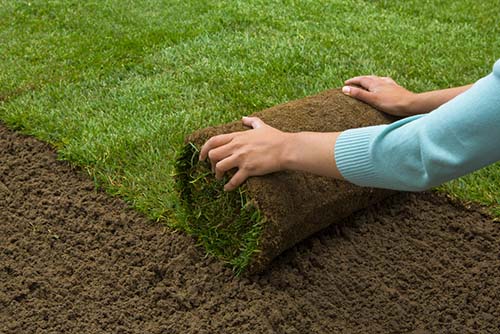
The best time to plant Bermuda grass is in the spring after the final frost of the year (around mid-March). If you are beginning with a new lawn, this is when you would add sod. Allow one full warm season (spring to fall) for the sod to establish roots in your lawn before aerating.
Sod usually contains a hybrid of different Bermuda grass types while Bermudagrass seeds are mostly just common Bermuda grass. We do not recommend overseeding a Bermuda lawn because of this difference in grass varieties.
Aerating
Compacted soil due to heavy foot traffic, silt, and clay can compress your lawn, preventing air, nutrients, and water from reaching the roots of turf. This can result in constricted growth, weeds, and pest problems in Bermuda grass lawns.
Aerating will help break up compacted soil, allowing roots to receive nutrients. Bermuda grass should be aerated once or twice a year in the late spring or early summer to prevent the lawn from drying up and to keep the grass lush and growing. Watch the video below for more information on aerating.
Fertilizing
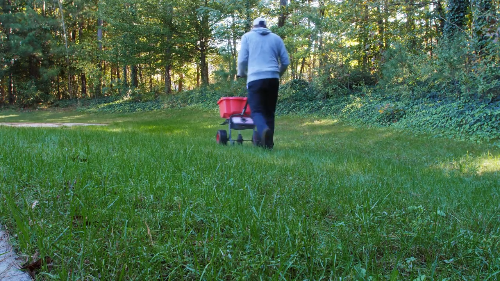
Fertilizing is an easy way to give your lawn the nutrients it lacks, which will help the lawn grow-in fully and fight off weeds and disease.
- Have your soil tested at your local extension office or do your own at-home soil test.
- The soil test results will show what nutrients your soil is lacking and what fertilizer is needed.
- Fertilize Bermuda grass 2-4 times per year, between March and November, based on the results of your soil analysis.
- Bermuda often lacks nitrogen, meaning your applications will likely be nitrogen heavy. Often 2-4 pounds of nitrogen per 1,000 square feet will need to be added to Bermuda lawns each year. The amount of nitrogen needed and how often to apply will vary based on your location and soil analysis results.
Watering
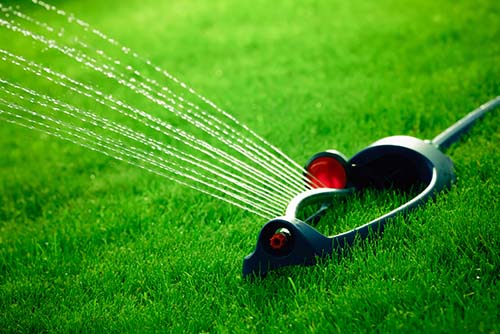
Bermuda grass does not need as much water as some other grass types, but will still benefit from watering.
- In the spring (March - May), and fall (September - November) bermudagrass should only be watered if there is an unexpected hot dry period or if the grass is curling and wilting.
- During the summer, give your lawn at least 1.25 inches of water per week. We recommend watering for 2-4 hours every third day unless there is rain in the forecast.
- Water grass in the morning to avoid burning the grass.
Bermuda Grass Weeds and Diseases
Like all turf, Bermuda grass is susceptible to certain weeds and diseases that grow in warm-season grasses. Proper maintenance of your lawn, like fertilizing and aerating, will help Bermuda grass resist weeds and lawn diseases.
Weed Control
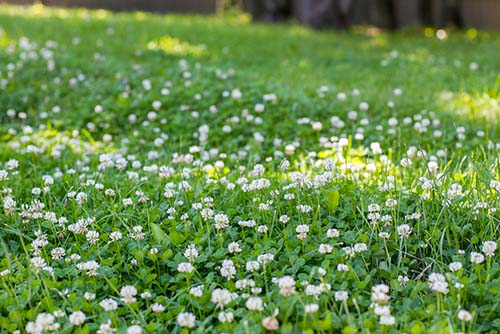
There are many weeds that can grow in Bermudagrass. Depending on where you live and what weeds are prevalent in your area, you may see crabgrass, annual bluegrass, clover, spurge, or nutsedge in your lawn.
The easiest way to control weeds in your lawn is to prevent them from growing. Applying 1 or 2 pre-emergent herbicide applications in the spring and 1-2 in the fall will help Bermuda grass fight off invading weeds. Pre-emergents contain weed control that prevent weeds from growing above the soil and into your lawn.
If you missed the pre-emergent application window and develop weeds in your lawn, a post-emergent herbicide labeled for that weed will help control the weed. Be sure your post-emergent herbicide is labeled for use in Bermuda grass or else you may damage the healthy turf during your treatment.
Pro Tip
If you see just one or two weeds in your lawn, you can pull them out by hand. Be sure to get the full weed, roots and all, or you may see the weed pop up again.
Disease Control

Lawn diseases can quickly devastate a lawn due to the spread of bacteria and fungus. Fungal infections like dollar spot, large patch fungus, and spring dead spot can be found in Bermuda grass, especially in lawns that are not properly drained or aerated.
Like herbicides for weed control, fungicides can be used to both treat and prevent lawn disease in Bermuda grass. Read our guide on fungicides to learn when fungicides are needed, how to select the best fungicide for your lawn, and the various methods of treatment available.
Bermuda Grass Pest Control
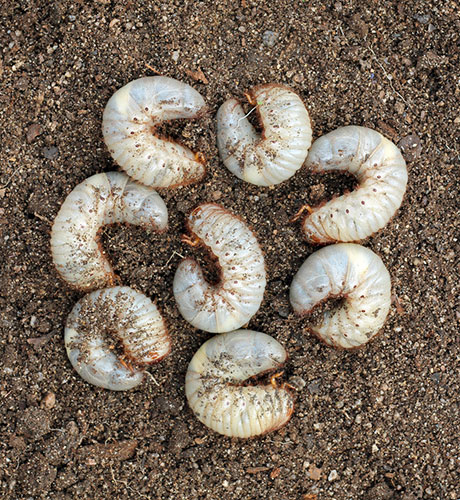
Many different insects and pests can live among Bermuda grass lawns. Healthy lawns that are properly maintained will help reduce pest infestations but cannot completely stop or eliminate pests, especially those that come from neighboring lawns or plants brought into the yard.
Bermuda grass mites, army worms, ants, chiggers, ticks, crickets, and grasshoppers are some pests that are often found in Bermuda grass, but sod webworms, Japanese beetles, and white grubs can cause the most damage.
Insecticides labeled for turf pests can help control a pest infestation and can also be used preventatively, especially if you see a certain pest year after year. Milky spore is a natural way to control white grubs (the larvae of Japanese beetles) but it will take several applications over two years to see full results.
Read our guide on insecticides to learn more about controlling infestations within Bermuda grass.
Conclusion
Bermuda grass is a heat and drought resistant turf-type that is popular with golf courses, athletic fields, and homeowners due to its color and preferred climate. If you have any questions about caring for your Bermuda grass, give the experts at DoMyOwn a call at 866-581-7378 or email us at [email protected].



